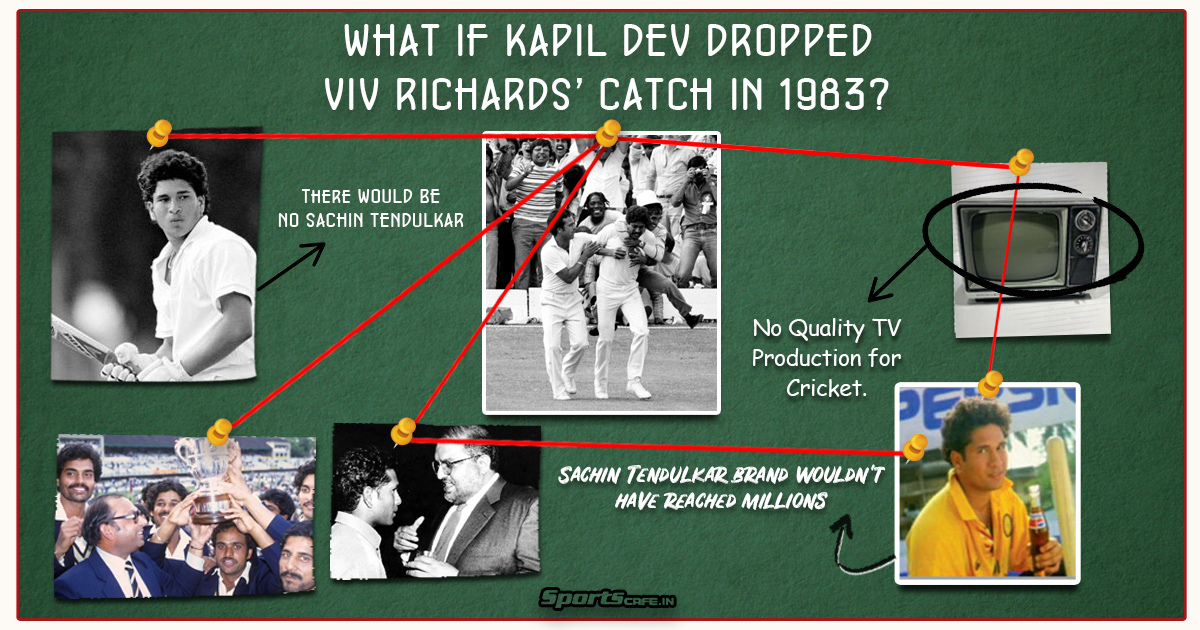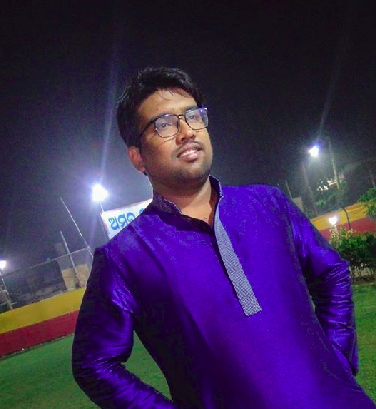What if Wednesday | What if Kapil Dev dropped Viv Richards' catch in 1983 World Cup final
Staying in present and embracing the unpredictability is fine but there is a certain vernacular charm in going back, reliving the past as it slowly chips away at our fondest memories. For that, is ‘What if’ - a sentiment cricket fans have in common, finding joy in the imagination.

“What if Rohit Sharma wouldn’t have twisted his ankle in the practise session of that 2010 Nagpur Test” - asked Anirudh, who madly cited a story of how the future of Indian cricket would have shaped for an incident that probably didn’t catch a lot of eyeballs that day. Listening to it was maddening, if not spine-chilling, to say the least, for we love living in the time of regret and nostalgia, trying to make sense of events that shaped our lives as cricket fans. A long shot perhaps, who knows, we would have had Subramaniam Badrinath as the ultimate Star of Indian cricket, and not Virat Kohli. That we would never know and maybe the beauty of it lies in not knowing at all.
Being a cricket romantic and a bigger Indian cricket fan, it was all but definite that the sentiment of “what if” would wander my mind back to the greatest catch that has ever been taken in a game of cricket. The catch that not only defined a generation of cricketers from the mystical land of India but also of the sport itself, for cricket changed since that day. June 25, 1983, was not only a day, but it was also a date with destiny.
“Viv Richards strode to the crease and had a determined air about him. He was timing the ball sweetly and took a heavy toll of our bowling. He reached a quick-fire 33 with the help of six explosive boundaries… At 2 for 57 the Windies only had to get 127 off 46 overs with Richards in full flight. It looked like a foregone conclusion and we were praying.Richards swung at Madan Lal and the ball soared over midwicket. It was always going away from me as I sprinted towards the boundary and I overtook the flight path of the ball, 20 yards in from the boundary. I caught a glimpse of it descending over my left shoulder and I was running away from it. I slowed fractionally and managed to hang on to the ball in the tips of my fingers.”
Study the replay and you will find many possibilities. "Shot," was Richie Benaud's initial utterance but the cruel fate had it all. It shut the door on Windies’ face and India, who had entered the tournament as 66-1 outsiders, became the champions - giving the world perhaps its greatest romantic story to have emerged out of a cricket field.
But stop. Close your eyes. Imagine. Wonder. What if the ball would have descended a little farther? What if Kapil failed to judge the accurate moment or what if the nervousness of the World Cup final took over? What if Kapil were as unathletic as many of his colleagues were? What if Kapil’s primary motive was not to win the World Cup but to have a stop over before going to the USA for a boys trip? Would things have remained the same? Like the tale of Badrinath and Kohli, we will never know, but the fun is in turning the clock back and pondering the possibilities. Let’s try to understand the dilemma and opportunities in phases.
Just for that World Cup, the BCCI, whose exchequer at the time of World Cup had a mere INR 2,00,000, played a key role in establishing PILCOM, a consortium comprising India, Pakistan, and Sri Lanka and majorly backed by Dhirajlal Ambani’s Reliance Industries. The Asian Bloc - as it later came to known as - firmly used the financial power of Reliance to encash on the sudden surge of popularity of the format in a country to bring in the 1987 World Cup - for the first time out of England. All along, his companion was Jagmohan Dalmiya, the secretary of Cricket Association of Bengal, who brought his free market disciple to the country still mired in socialism and License Raj. The modern Indian cricketing fans would find it difficult to understand, but it was the starting point of a revolution that shaped Indian cricket in a way nothing had earlier.
Just imagine, had that not happened, had NKP Salve not taken the win to the free market, cricket would have forever remained adjunct to the Lord’s Hall of Fame, a game dominated by the elites and domain of the Caribbean swag. Salve would never have enraged, BCCI wouldn’t have shown that sudden and rapturous embrace of the ODIs and would probably never have bid for the right to stage the next World Cup. There would be no great TV deals, as Trans World International, an IMG subsidary offered with the Hero Cup in 1992, a pentangular ODI tournament to celebrate Cricket Association of Bengal’s diamond Jubilee. Or India would have never gone ahead with Mark Mascarenhas' idea of encashing in a liberalised market brought forward by the PV Narsimha Rao government, privatising state-owned companies and ensuring foreign direct investment.
To understand how the future shaped for India after that historic day at Lord’s, we need to understand Mascarenhas phenomenon better. Mascarenhas, a Connecticut-based Indian businessman, was the owner of the production company WorldTel, and landed a knock-out deal of 10 million USD in August 1993 for the 1996 World Cup, planning to offset the costs by breaking the rights up and reselling them to other offshore broadcasters. It disturbed the prior balances of power, that had somehow engulfed to form a war-like situation between Doordarshan’s Director General Ratikanta Basu, who was backed by India’s then information and broadcasting minister KP Singh Deo, and Trans World International. With a world-class coverage, Mascarenhas delivered what he promised and gave Indian cricket their very own Channel Nine moments.
It went on to make history when state-owned Doordarshan was later forced to pay to the board for television rights, breaking their long-standing ambition of having a forever monopoly in the disguise of 102-year-old Telegraph Act. The broadcasting deal, which later saw Disney-backed ESPN, media mogul Rupert Murdoch-owned Star TV, Subash Chanda’s Zee Television, Abdul Rahman Bukhatir’s Ten Sports and then Harish Thiwani’s entry with Nimbus Communications, surge to such an extent that Basu, a firm believer of state ownership over signal waves, joined Star TV. Although it was not conceived that way by the middle-class Indians then, it conveniently led us to the time of HD Television broadcast that we are seeing now in 2020.
That the WorldTel deal, that I would like to remind for the context of the story that a serial product of the 1983 World Cup win, not only gave Indian cricket a wider audience, but also made Sachin Tendulkar a hero for life. The return of Mark Mascarenhas, who left Bangalore in 1976 to explore business opportunities in the USA, had a domino effect on the entire ecosystem, with the businessman taking over the role of managing Tendulkar, through his production company.
When Tendulkar’s biggest advertising deal was about Rs 16 lakh a year, Mascarenhas signed him up for a five-year contract with almost a 25 crore deal. Adidas, MRF, Philips, and Visa coughed up in excess of Rs 1 crore annual contract for the little man from Mumbai and that followed his regular brands like Boost and Pepsi escalating their contracts in accordance. Once the first contract ended, WorldTel renewed with 100 Cr to Tendulkar - double the amount Mascarenhas had paid for the rights for the 1996 World Cup.
Tendulkar became the biggest brand in cricket that there ever was and Indian cricket never lost the cutting edge, even though the match-fixing controversy erupted in the late 90s. It might not be easy to digest, but none of this would have happened had that catch wouldn’t have been taken. Think and wonder! For that, cricket completely changed after India’s World Cup win in 1983, with red-ball, white-shirt and barricade-less Lord’s game making way for IPL’s glitz and glamour, parties and what not. Such was the transforming ability of that one god-damned catch.

Comments
Sign up or log in to your account to leave comments and reactions
0 Comments